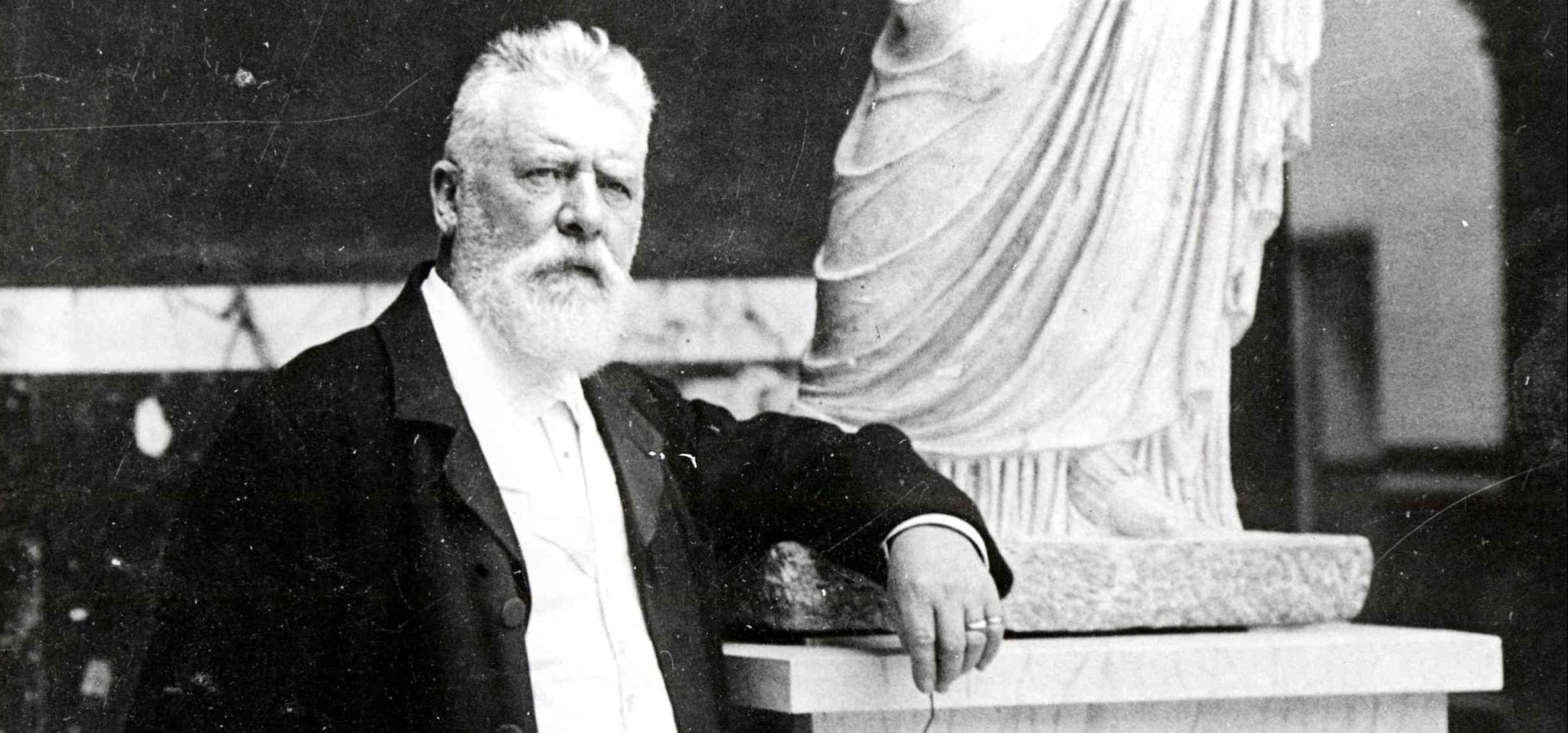Carl Jacobsen (1842-1914), the founder of Ny Carlsberg Glyptotek is known as a brewing magnate, a patron of the arts and a passionate art collector. He collected sculpture from many periods but Greek and Roman marble sculpture, as well as that of 19th century France and Denmark became the principal areas of the collection.
Fascinated by sculpture
It was particularly sculpture which Carl Jacobsen collected as he believed that three-dimensional art came closest to the fundamental condition of mankind. He was an enthusiastic admirer of contemporary French artists, whose works he saw at the annual exhibitions in Paris.
The first French work, La Musique by E. Delaplanche, he bought in 1878, and from that point onwards he acquired a couple of pieces each year. His first antiquity, the archaic Rayet Head, he bought in 1879.
By 1882 the young industrialist already had so many sculptures that he opened his collection to the public in the winter garden of his home. He called this The Glyptothek at Ny Carlsberg. Here was a judicious selection of works: a Roman sarcophagus, some portrait busts from the desert city of Palmyra, French statues and copies of Roman bronze statuettes discovered at Pompeii.
The collection rapidly expanded and from 1887 it was halcyon days for Jacobsen. It was then he made the acquaintance of the German archaeologist Wolfgang Helbig, who, over the next 25 years, acted as his agent in Rome in the acquisition of antiquities. At the same time he continued buying from the Paris Salon and also commissioned works directly from some of the French artists.
A collector with an impressive range
In his youth Jacobsen also developed a desire to own paintings, particularly by the great Italian masters of the Renaissance and the Baroque. These he had familiarised himself with, and admired on his frequent travels around Europe. He managed to buy some fine paintings, though none by the very greatest masters – such as Raphael and Michelangelo.
Jacobsen also acquired a large number of drawings by Danish and foreign artists and he created a significant collection of medals and plaquettes. What are quite extraordinary are the thousands of prehistoric stone tools which Jacobsen bought on a trip to Athens in 1887. In his last years he became fascinated by Asian art and he managed to create a fine, if modest, collection of sculpture in wood and bronze from China, Japan and Java. These were, however, only on exhibition at Glyptoteket for a few years. None of these areas of collecting was, though, subsequently associated with his name.
Carl Jacobsen purchased many plaster casts of famous ancient statues in other museums and in 1896 when the National Gallery of Denmark was inaugurated, the entire basement was fitted out as a museum for casts, and Jacobsen became its director.
The Little Mermaid and other donations
For his entire life Jacobsen was seriously committed to the city of Copenhagen and its decoration. In 1879 he established the Albertina Fund, named after Bertel (Alberto) Thorvaldsen, which was used to finance the installation of bronze copies of ancient statues in such locations as Ørsted Park. Carl Jacobsen initiated and paid for the erection of a spire on the Nikolaj Church, which had been burned down in 1795. In his final years the master brewer battled with Copenhagen City Council for permission to mount a spire on Copenhagen Cathedral, the Classicist Church of Our Lady, a battle he lost. In 1913 Jacobsen paid for the famous sculpture The Little Mermaid by Edvard Eriksen, which was set up at Langelinie.
Visit the Carlsberg family’s new digital communication site, where you can read about the great impact that the brewer has had on Copenhagen.
Exhibitions
The Glyptotek's exhibitions present artworks and cultural-historical objects.
Café
Enjoy delicious dishes, snacks, and cakes at the museum café Picnic overlooking the beautiful Winter Garden.
Calendar
See what's happening at the Glyptotek.
